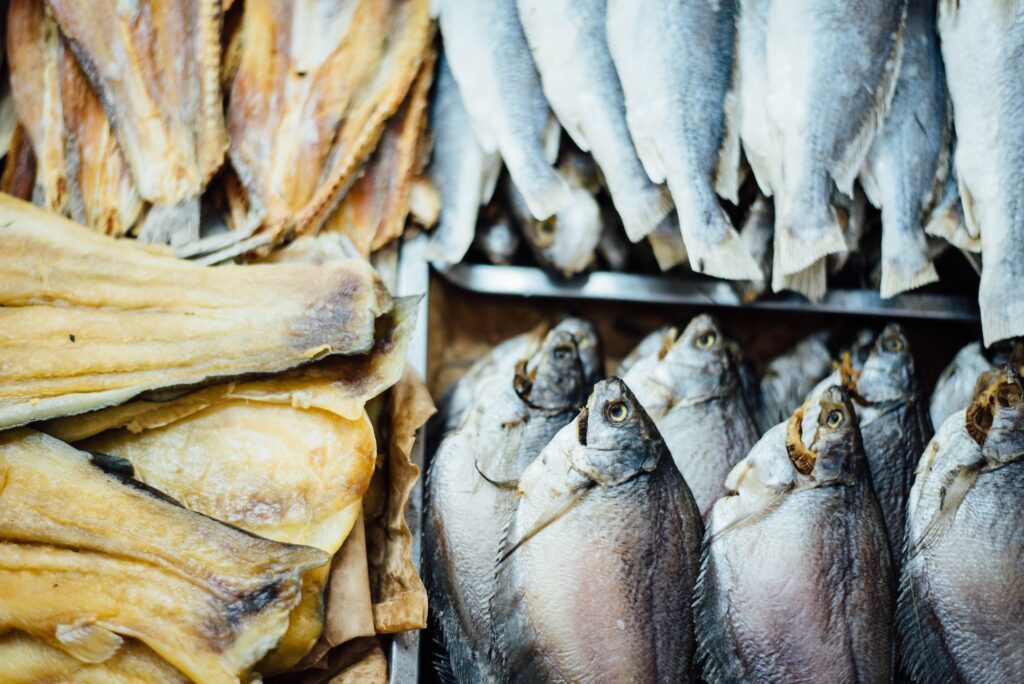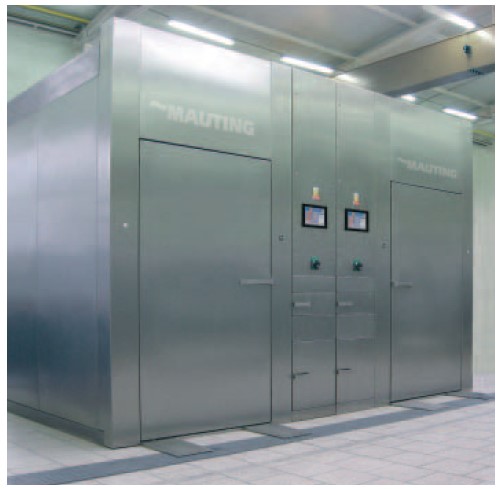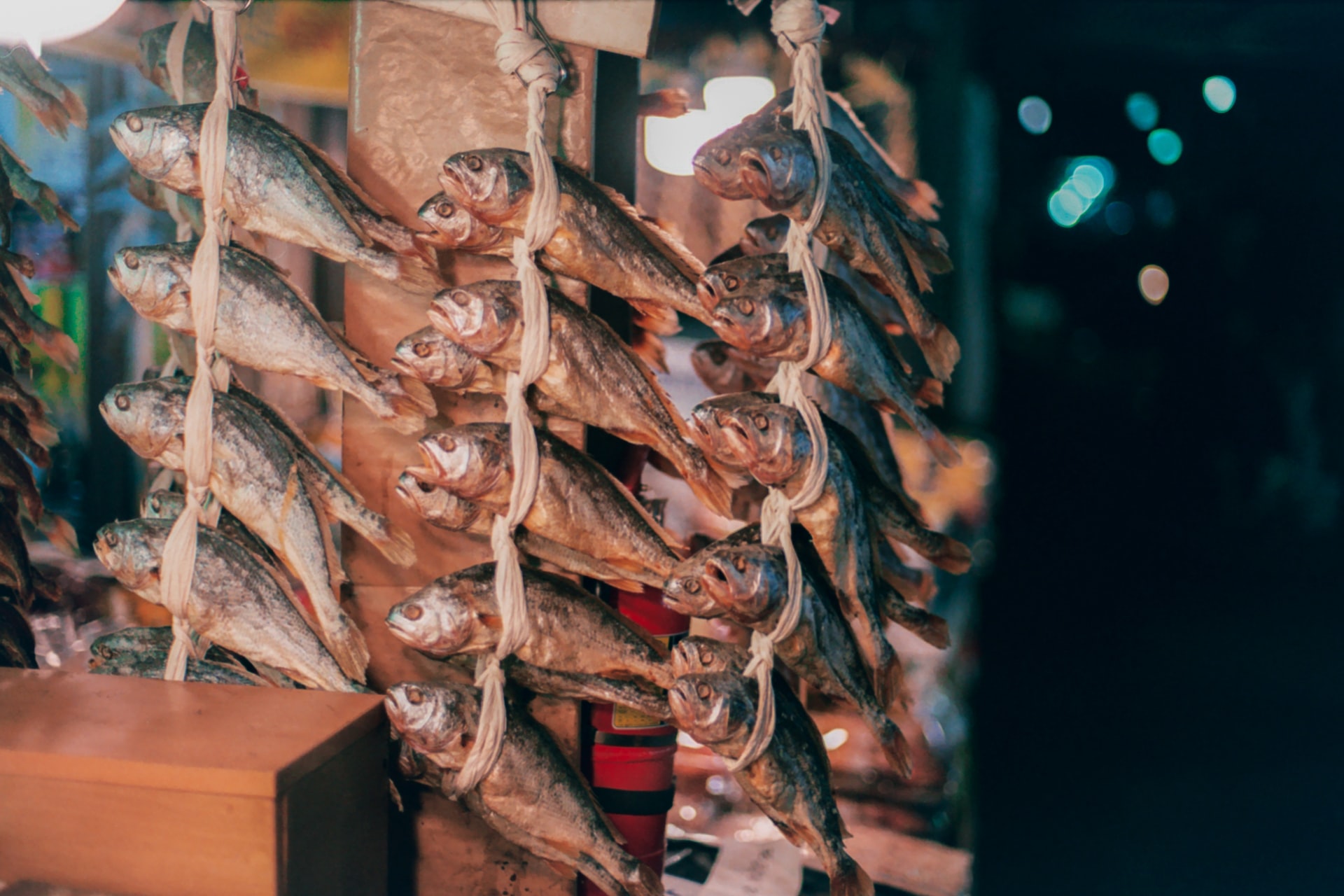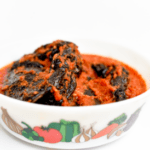In Nigeria, catfish is one of the most popular fish species produced for domestic consumption and export.
While specific statistics on dried catfish production in Nigeria are not readily available, Nigeria’s total fish production is estimated at 1 million metric tons yearly, with catfish accounting for a significant portion of this figure.
In terms of exports, Nigeria exports 500 metric tons of dry catfish every month, with the main export destinations being the United States, the United Kingdom, and Canada.
According to the Nigerian Institute for Oceanography and Marine Research (NIOMR), dried catfish production in Nigeria is predominantly carried out by small-scale fish farmers, who account for over 80% of the production.
See also: The Truth About Dried Catfish Production in Ghana
Introduction To Drying Catfish In Nigeria:
The process of producing dry catfish in Nigeria typically involves harvesting the catfish from ponds, gutting and cleaning them, and then drying them under the sun or using a dehydrator. The drying process helps to preserve the fish, giving it a longer shelf life and making it easier to transport.
The production of dry catfish is essential to the livelihoods of many Nigerians, particularly those in rural areas. It provides an important source of income for small-scale farmers and helps to create employment opportunities in the local communities. Dry catfish is also an important source of protein for many Nigerians, particularly those who live in areas where access to fresh fish is limited.
Despite the significant contribution of dry catfish production to the Nigerian economy, the sector faces several challenges, including inadequate infrastructure, lack of access to finance, and low-quality standards. However, the government and private sector stakeholders are working to address these challenges and promote the sustainable growth of the industry.
Overall, dry catfish production in Nigeria is an important economic activity and contributes to the country’s food security and export earnings.
The production of dry catfish is essential to the livelihoods of many Nigerians, particularly those in rural areas


Types Of Dried Catfish Production Methods In Nigeria:
Traditionally, dried catfish in Nigeria were produced using a wood fire. But with time, newer technologies, and major health concerns, dried catfish producers have shifted to unique ways of drying catfish that we will be discussing below.
Air-drying:
While this too is a traditional method of drying catfish, it involves no use of smoking, making it a suitable choice for drying catfish. As the name suggests, it uses environmental resources like air and sun to dry the catfish.
To dry catfish using an air drying method in Nigeria, the fish is first gutted and cleaned then soaked in a saltwater solution for less than an hour. It is then placed on a flat surface in a well-ventilated area and left to dry in the sun for several days, turning the fish over regularly to ensure even drying.
Many processors also hang the fish on lines. This ensures the catfish dries evenly without the need for turning them regularly.
Brine-drying:
This procedure is similar to air drying, however, as the name suggests, a lot of the time spent in this process is during the brining. The fish after being gutted and cleaned is soaked in the brine solution, preferably overnight. Brining the catfish overnight ensures that all the moisture is thoroughly removed.
Then like in air drying, the catfish is placed on a flat surface, or hung on lines, in a well-ventilated area, and left to dry completely.
Solar-drying:
Another unique way of drying catfish in Nigeria is made possible using solar dryers.
Solar dryers are designed to harness the energy from the sun to dry catfish and other agricultural products. They are typically made of a wooden frame covered with a plastic sheet that traps the sun’s heat and converts it into warm air that circulates through the dryer.
The solar dryer technique for drying catfish is becoming increasingly popular in Nigeria as it provides an alternative to the traditional smoking and air drying method. The advantage of using solar dryers is that they are inexpensive to construct and operate, and they produce high-quality dried catfish that is free from smoke residues and has a mild flavor.
Oven-drying:
Last but not the least, oven-drying is one of the most efficient ways of drying catfish in Nigeria.
This is now the popular method of choice for many of the commercial producers who sell to retail outlets or those involved in export.
In this method, the gutted and cleaned fish are placed on racks inside an oven and dried using warm air. The oven drying technique is more commonly used by commercial fish processors who have access to large-scale ovens that can dry large quantities of catfish quickly and efficiently.
Despite the use of such unique catfish drying methods in Nigeria, the industry faces several challenges, which have hindered its growth.


Problems Faced By the Dried Catfish Industry In Nigeria, And Their Possible Solutions:
· Inadequate infrastructure
Nigeria lacks adequate infrastructure such as good roads, storage facilities, and processing plants just to name a few of many additional problems.
Providing better infrastructure can help to reduce transportation costs, prevent spoilage, and improve processing efficiency.
· Poor Quality Control
Lack of proper quality control measures and standards can lead to low-quality products that are less competitive in the market.
Development of standardized quality control measures, training for producers on good hygiene practices, and establishment of quality control agencies to enforce standards can greatly help the dried catfish production in Nigeria.
· Lack of Finances And Technologically Advanced Resources:
The industry is still largely dominated by traditional production methods, due to a lack of finances. This gravely limits the efficiency and scalability of the industry reducing the potential economic impacts of dried catfish production in Nigeria.
Better governmental policies to support small-scale processors along with knowledge about new technological advancements can improve the industry’s efficiency.
· Limited Access To The International Market
The industry faces limited access to both domestic and international markets.
There is a need for better market information, more efficient trade regulations, and improved market linkages for producers.
· Pest and Diseases
Due to the use of traditional drying methods, pest and rodent infestation is common in Nigeria.
Strict and consistent measures to limit pest and rodent infestation from officials can help improve industry standards.
· Climate Change
Dried catfish production in Nigeria is heavily dependent on weather conditions, particularly during the sun-drying process. Excessive rain or humidity can delay the drying process, leading to an increased risk of spoilage and reduced quality.
Shifting from traditional methods to more technologically advanced methods that include the use of catfish smoking machines instead of dependency on natural resources can help fight this problem.


Conclusion
Just like in many of the Nigerian industries, dried catfish production in Nigeria is seriously hampered by many of the common problems that also affect other areas f the economy.
Lack of stable electricity, fluctuations in the supply of petroleum products, and poor infrastructure as already discussed are just but a few of these obstacles that face the development of the industry.
Notwithstanding these, however, many processors still brave it to produce both for local and commercial exort purposes. While the volume is not as much as would have been expected based on the amount of production, it is nonetheless commendable that they are attempting almost to do the impossible.
These processors can be encouraged by the government by providing access to financing and a regulatory framework that can aid the development of the industry. Dried catfish production in Nigeria can grow in leaps and bounds if the government and other bodies can pay close attention to resolving many of the challenges listed here.
We love to hear from you!
Are you a processor or a buyer? What issues are you currently facing with producing or procuring dried catfish?
Use the comment box below to share your experiences.
Many of our readers would love to hear from you.
See similar posts: 5 Steps to Preserve, Process and Package smoked catfish and The Top 5 Health Benefits of Smoked Catfish




